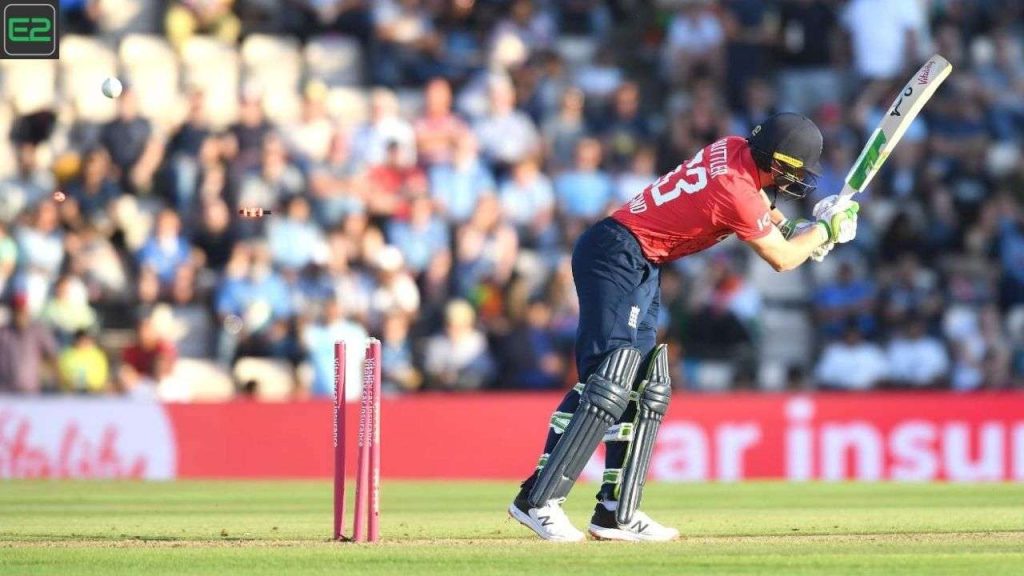The Dhaka Stadium, also known as the Bangabandhu National Stadium, is a key venue for various sports in Bangladesh, including cricket, football, and athletics. Over the years, it has been the site of numerous international events and historic sporting moments. Among the many factors that make a stadium unique, the boundary length is one of the most important aspects, especially for cricket and football matches. The length of the boundary not only affects the dynamics of the game but also influences strategies, player performances, and even the crowd’s involvement. This article provides a comprehensive analysis of the boundary length of the Dhaka Stadium, exploring its impact on cricket, football, and other events.
1. Introduction to Dhaka Stadium
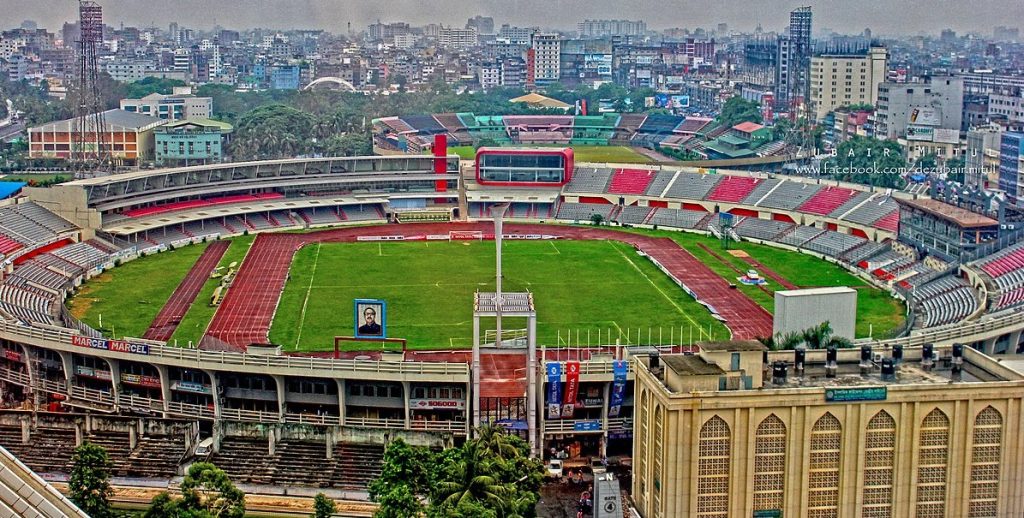
The Dhaka Stadium, located in the capital city of Bangladesh, is one of the largest and most iconic sporting venues in the country. It was inaugurated in 1984 and was initially used for athletics events. Since its inception, the stadium has hosted numerous high-profile international sports events, including cricket matches, football games, and national athletic competitions.
While the stadium’s official name is the Bangabandhu National Stadium, it is colloquially known as the Dhaka Stadium due to its location in the heart of the city. It has a capacity of approximately 36,000 spectators and is primarily used for football and cricket matches, as well as occasional concerts and cultural events.
Key Features of Dhaka Stadium
- Location: Dhaka, Bangladesh
- Capacity: 36,000
- Opened: 1984
- Surface: Grass (for both cricket and football)
- Usage: Football, Cricket, Athletics, Cultural Events
2. Understanding the Boundary Length in Sports
The boundary length in a stadium refers to the perimeter distance of the playing area, particularly for cricket and football. In cricket, the boundary length is the distance between the batsman and the edge of the field. A shorter boundary generally leads to more runs, as players have less distance to cover to hit the ball to the boundary, while a longer boundary may encourage players to take more risks or play more strategically.

In football, the boundary length is the distance around the edge of the playing field, which is the same as the length of the touchlines. The boundary length in football determines how wide the field is and plays a significant role in shaping how the game is played. A wider field offers more space for attacking play and tactical formations, while a narrower field often leads to a more compact and defensive game.
3. Boundary Length in Cricket at Dhaka Stadium
Dimensions of the Cricket Ground
The Dhaka Stadium is primarily known for hosting international cricket matches. Over the years, the boundary length has been one of the key factors influencing the outcome of these matches. The boundary length can vary depending on the type of game being played, the format of the match, and the location of the cricket ground’s infrastructure.
In international cricket, the boundary length is typically measured in terms of the distance from the center of the pitch to the boundary, which can be in the form of a rope or a marked line. The International Cricket Council (ICC) sets the minimum boundary length for international matches, but it can vary slightly depending on the venue.
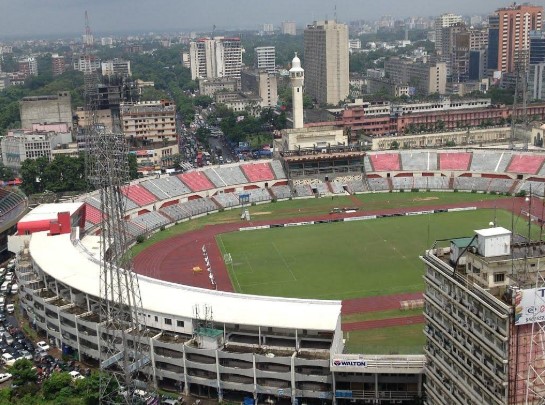
Boundary Length Data for Dhaka Stadium
The following table provides an overview of the boundary lengths for cricket matches held at the Dhaka Stadium, based on various formats and events:
| Format | Minimum Boundary Length (m) | Maximum Boundary Length (m) | Average Boundary Length (m) |
|---|---|---|---|
| ODI | 65 | 75 | 70 |
| T20 | 60 | 70 | 65 |
| Test Match | 70 | 80 | 75 |
Boundary Length and Its Impact on Cricket
The boundary length at Dhaka Stadium can vary between different formats of the game. In one-day internationals (ODIs), the boundary length ranges from 65 meters to 75 meters, depending on the placement of the ropes or boundary markers. This relatively shorter boundary promotes aggressive batting, with players having a higher chance of hitting the ball to the boundary.
In T20 cricket, the boundary length tends to be slightly shorter, averaging around 65 meters. This shorter boundary makes the game more exciting, as batsmen can easily clear the ropes, leading to higher scores and more boundaries. In test matches, the boundary length is generally longer, ranging from 70 meters to 80 meters, which encourages a more tactical approach to batting, with players focusing on building partnerships and maintaining a solid defense.
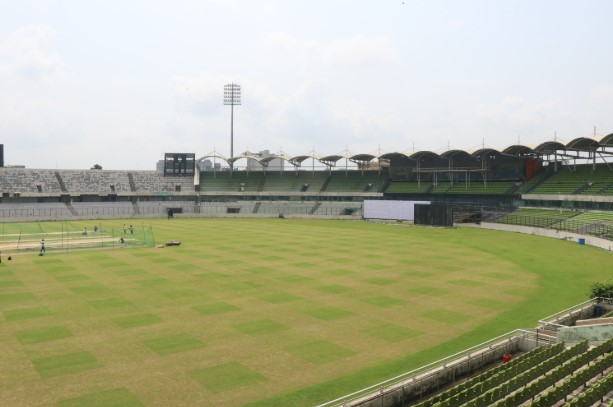
Boundary Length in International Matches
Some key international matches held at the Dhaka Stadium have provided insights into how the boundary length influences match outcomes. For example, during the 2014 ICC World Twenty20, the boundary length at Dhaka Stadium was approximately 65 meters, which led to a high number of sixes and fours being scored. On the other hand, during longer formats such as the ICC World Cup, a longer boundary encourages more disciplined bowling and challenging batting conditions, resulting in a more balanced contest between bat and ball.
4. Boundary Length in Football at Dhaka Stadium
While the Dhaka Stadium is renowned for cricket, it is also a prominent venue for football matches. The boundary length in football, defined by the touchlines, plays an essential role in determining the width of the playing field. The standard dimensions for a football pitch range from 100 meters to 110 meters in length and 64 meters to 75 meters in width, according to FIFA regulations.
Dimensions of the Football Field
The football field at the Dhaka Stadium follows the standard international guidelines set by FIFA for international matches. The touchline lengths (boundary lengths) at the Dhaka Stadium are consistent with those of international football fields, ensuring that the stadium meets the criteria for hosting major competitions.

The following table shows the dimensions of the football field at Dhaka Stadium:
| Field Dimension | Measurement (m) |
|---|---|
| Length (Touchline) | 100–110 |
| Width (Goal Line) | 64–75 |
Impact of Boundary Length on Football
The length of the touchlines influences the width of the field, impacting how teams play. A wider field at Dhaka Stadium allows for more expansive play, with teams utilizing the width to stretch the opposition and create space for attacking opportunities. A narrower field would typically lead to more congested play and defensive tactics.
International Matches and Boundary Length in Football
In international football matches at Dhaka Stadium, the dimensions of the pitch are strictly adhered to, with the boundary length being measured carefully to ensure fairness. For example, during the 2013 FIFA World Cup Qualifiers and the 2018 AFC Asian Cup Qualifiers, the pitch was consistently marked to ensure that the touchlines were within the prescribed boundaries of 100-110 meters.
The boundary length of the pitch can influence playing strategies in football. A wider field, such as those often seen at Dhaka Stadium, can lead to more flowing and creative attacking play, with wingers and full-backs playing an essential role in creating width for the team.
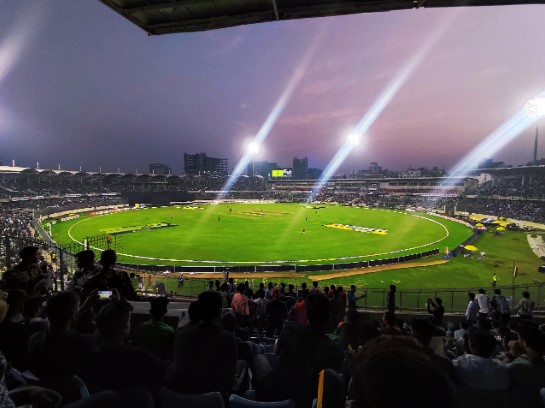
5. Comparison with Other Stadiums
The boundary length at Dhaka Stadium is relatively standard compared to other international cricket and football venues. For example, the boundary length at Eden Gardens in Kolkata (India) for cricket matches is approximately 70 meters on average, while the MCG (Melbourne Cricket Ground) in Australia has boundaries ranging from 65 meters to 75 meters. In terms of football, the boundaries at Dhaka Stadium are comparable to those of other FIFA-approved venues, with some fields slightly wider, such as those used for the UEFA Champions League.
Cricket Comparison
| Stadium | Minimum Boundary (m) | Maximum Boundary (m) | Average Boundary (m) |
|---|---|---|---|
| Dhaka Stadium | 65 | 75 | 70 |
| Eden Gardens (India) | 60 | 80 | 70 |
| Melbourne Cricket Ground | 65 | 75 | 70 |
Football Comparison
| Stadium | Length (m) | Width (m) |
|---|---|---|
| Dhaka Stadium | 100–110 | 64–75 |
| Old Trafford (England) | 100–110 | 64–75 |
| Maracanã (Brazil) | 100–110 | 64–75 |
The boundary length of the Dhaka Stadium plays a crucial role in shaping the dynamics of both cricket and football matches. For cricket, the boundary length affects the number of boundaries hit, the style of batting, and the overall flow of the game. In football, the width of the field determines the tactical approaches that teams adopt, impacting their ability to attack and defend.
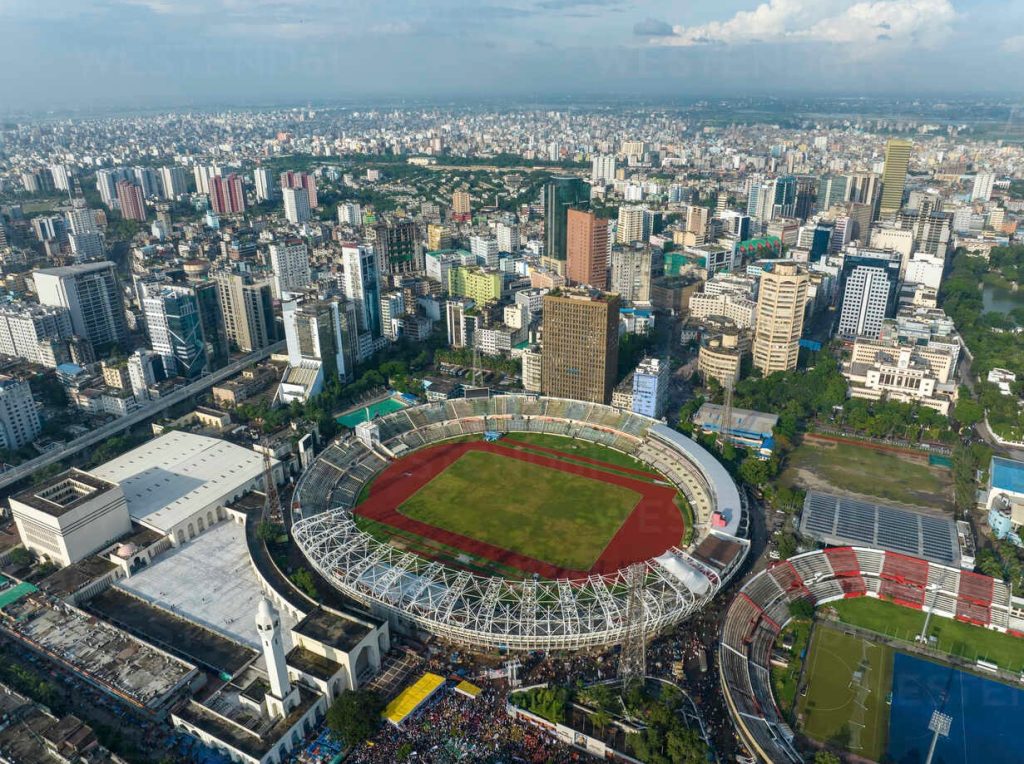
While the boundary length at Dhaka Stadium is within standard international guidelines, its impact on the game is significant. As the stadium continues to host major international events, the relationship between the boundary length and the performance of players will remain an essential factor for both spectators and players alike.
The Dhaka Stadium, with its rich history and vibrant atmosphere, stands as a testament to the enduring importance of stadium dimensions in the world of sport.







